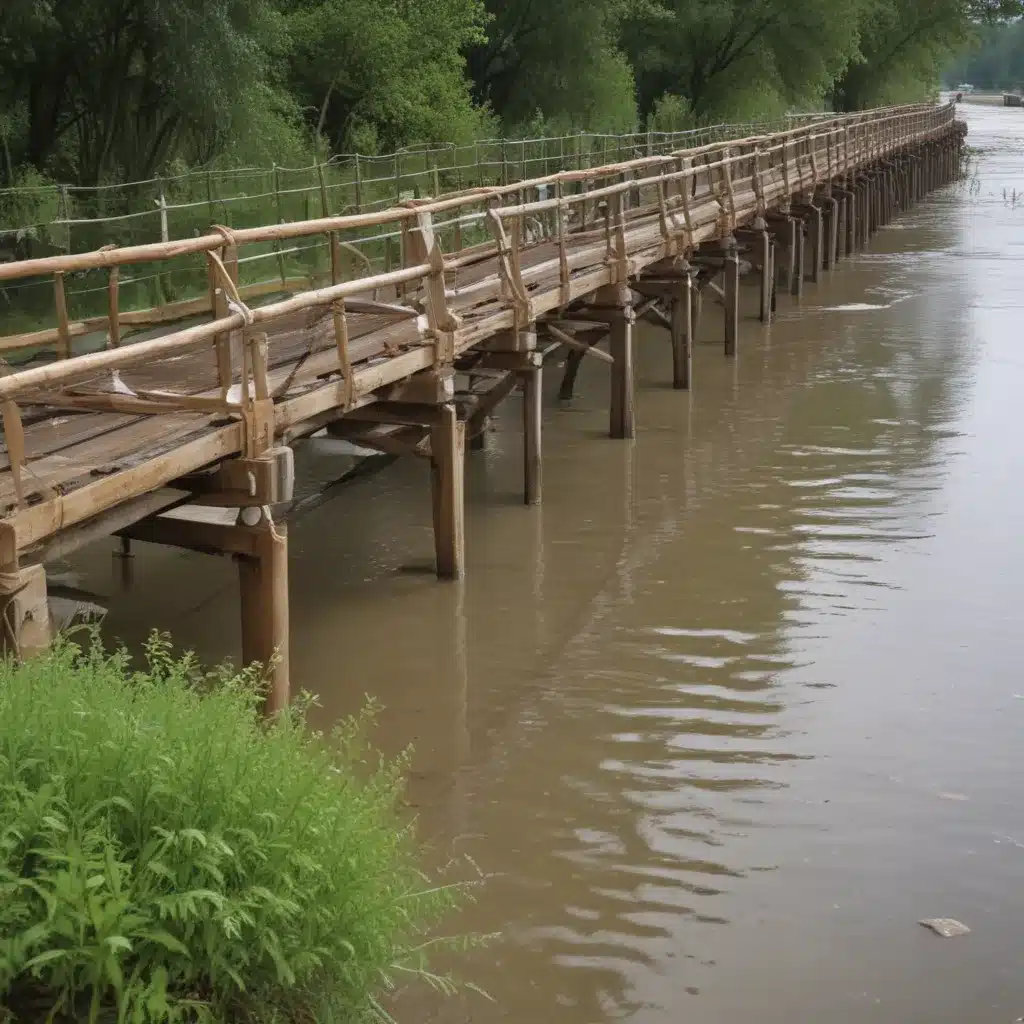
As experienced flood control specialists, we are constantly seeking innovative and sustainable approaches to safeguarding communities from the devastating effects of flooding. In our 15 years installing… While traditional engineered solutions have their merits, a growing body of evidence suggests that we can learn a great deal from nature’s own flood control “engineers” – the diverse array of organisms that have evolved ingenious strategies for managing water, soil, and the flow of energy.
Now, this might seem counterintuitive…
This concept, known as biomimicry, involves studying natural systems and processes to inspire human-made designs and technologies. By closely observing how plants, animals, and even entire ecosystems respond to and mitigate the impacts of flooding, we can unlock a wealth of insights that can transform the way we approach flood control.
Harnessing the Power of Natural Water Management
One of the key areas where biomimicry can revolutionize flood control is in storm water management. Many organisms have evolved specialized adaptations for collecting, storing, and channeling water – adaptations that we can emulate in our own infrastructure.
For example, the Namib desert beetle lives in one of the driest regions on Earth, yet it is able to thrive by harvesting water from fog using its bumpy, water-repellent back. This ingenious design, which funnels water droplets into the beetle’s mouth, has inspired the development of fog-harvesting devices that can provide critical water supplies in arid climates.
Similarly, the lotus leaf is renowned for its self-cleaning, water-shedding properties, which are achieved through a unique micro-and nano-scale surface structure. This “Lotus Effect” has been replicated in advanced building materials, creating highly water-resistant and easy-to-clean surfaces that can help mitigate the impacts of heavy rainfall and flooding.
Beyond individual organisms, entire ecosystems can offer valuable insights. Wetlands, for instance, are natural flood control powerhouses, able to absorb and gradually release vast quantities of water. By restoring and protecting wetlands, we can harness this capacity to reduce the severity of flooding, while also providing critical habitat for diverse plant and animal life.
Flood-Resilient Structural Design
Biomimicry can also inform the design of physical flood control structures, such as levees, dams, and flood barriers. Many of nature’s most resilient structures, from the honeycomb-like exoskeletons of insects to the intricately branching root systems of trees, exhibit remarkable strength, flexibility, and adaptability – qualities that are essential for flood-prone infrastructure.
The Eastgate Centre in Harare, Zimbabwe, for example, takes inspiration from the ventilation system of termite mounds to regulate the building’s temperature and air flow. This passive, energy-efficient approach, which mimics the termites’ ability to maintain a stable internal environment, has proven highly effective in managing the building’s response to extreme weather events, including heavy rain and flooding.
Similarly, the Eiffel Tower in Paris is often cited as an example of biomimetic engineering, with its lattice-like structure drawing inspiration from the bone structure of the femur. This efficient, load-bearing design has enabled the tower to withstand the powerful forces of wind and weather for over a century.
Biomimicry in Coastal Protection
Coastal regions are particularly vulnerable to the impacts of flooding, whether from rising sea levels, storm surges, or other extreme events. Here, too, biomimicry offers valuable insights and solutions.
The ECOncrete technology, developed by an Israeli company, is a prime example. Inspired by the natural growth patterns and surface textures of marine organisms, ECOncrete creates specialized concrete structures that actively encourage the colonization of aquatic life, such as coral and oysters. These “living” seawalls not only provide enhanced coastal protection but also support the restoration of vital marine ecosystems.
Similarly, the Sahara Forest Project in Qatar and Jordan has drawn inspiration from the water-harvesting strategies of the Namibian beetle to create self-sufficient, desert-based greenhouses that can produce food and freshwater in arid environments. By emulating nature’s own water management systems, this innovative project demonstrates the potential for biomimicry to address the complex challenges of water scarcity and food security in the face of climate change.
Integrating Biomimicry into Flood Control Strategies
As we continue to grapple with the growing threat of flooding, it is clear that a multifaceted approach is required – one that combines traditional engineered solutions with the insights and strategies gleaned from nature’s own flood control “experts.” By embracing the principles of biomimicry, we can develop more sustainable, resilient, and ecologically-integrated flood control systems that not only protect our communities but also enhance the health and vitality of the natural world.
To fully harness the power of biomimicry in flood control, it is essential that we foster greater collaboration between engineers, biologists, ecologists, and other relevant professionals. By bringing together diverse perspectives and areas of expertise, we can unlock new and innovative ways of addressing the complex challenges posed by flooding.
It is also crucial that we continue to invest in research and development, exploring the potential of biomimicry in areas such as materials science, hydraulic engineering, and ecosystem-based approaches to flood management. As our understanding of natural systems deepens, we will be better equipped to translate these insights into practical, real-world applications.
Equally important is the need for policy support and regulatory frameworks that encourage the adoption of biomimetic strategies in flood control and water management. By creating incentives and streamlining the approval process for nature-inspired solutions, we can help accelerate the transition towards a more sustainable and resilient built environment.
Ultimately, the integration of biomimicry into flood control represents a profound shift in the way we approach this critical challenge. By learning from nature’s own “engineers,” we can develop innovative, cost-effective, and ecologically-sound solutions that not only protect our communities but also enhance the overall health and resilience of our planet. As we continue to face the growing threat of flooding, this biomimetic approach offers a promising path forward, one that harnesses the power of nature to create a more sustainable and resilient future.
Example: Manchester Advanced Flood Control Project 2024















